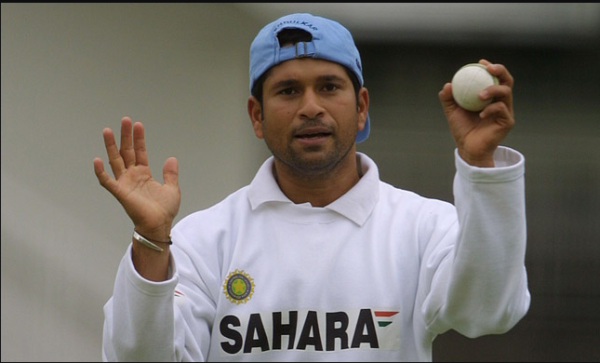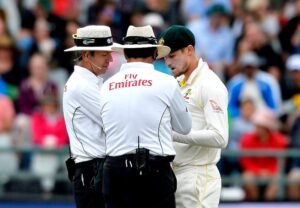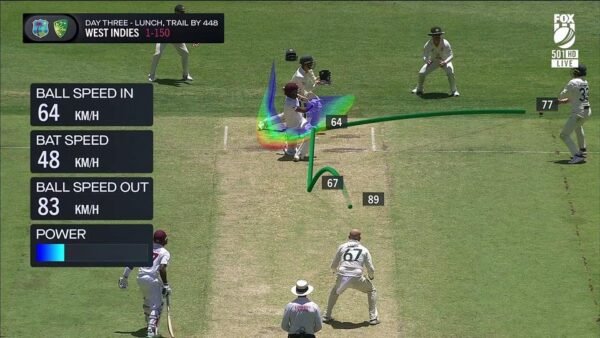Introduction
Ball tampering has long been a controversial practice in the world of cricket, with teams and players constantly seeking ways to gain an unfair advantage. However, the recent scandal involving the Australian cricket team has brought this issue into the international spotlight. The incident, which involved the deliberate alteration of the cricket ball during a match, has had far-reaching consequences for the players involved, as well as for the sport as a whole. In this blog post, we will provide a comprehensive analysis of ball tampering, exploring its history, impact, and the ongoing efforts to eradicate this unethical practice from the game. Join us as we delve into the world of cricket and uncover the true ramifications of tampering with the ball.
Understanding the concept of ball tampering
Understanding the concept of ball tampering is crucial in order to fully grasp its impact on the game of cricket. In simple terms, ball tampering refers to the deliberate alteration of the cricket ball during a match. This can be done in various ways, including using foreign objects to roughen or polish the ball, applying substances to alter its condition or behavior, or even using one’s fingernails to scratch or scuff the ball.
The reason behind ball tampering is to gain an unfair advantage, as a tampered ball can swing more, reverse swing, or grip the pitch more effectively. These factors can greatly influence the outcome of a match.
While the act of ball tampering is considered unethical and against the rules of the game, it is no secret that teams and players have attempted it throughout cricket’s history. However, the recent scandal involving the Australian cricket team has shed light on the seriousness of this issue and has prompted a global debate on the integrity of the game.

Historical Instances of Ball tampering
In order to fully understand the impact of ball tampering on cricket, it is important to examine historical instances of this controversial practice. Throughout the history of the game, there have been numerous incidents where players or teams have been accused or caught tampering with the ball.
Chris Pringle
In the course of a tour in Pakistan, New Zealand bowler Chris Pringle employed a discreet bottle cap to alter one side of a ball during a 1990 series in Faisalabad. Both Pringle and his captain, Martin Crowe, later confessed to this practice post-retirement. The New Zealand team had suspected the Pakistan team of similar actions, but their claims lack substantiating evidence.

Michael Atherton
During the “dirt in pocket” incident, England’s captain Michael Atherton faced accusations of ball tampering in a Test match against South Africa at Lord’s in 1994. Television cameras captured Atherton reaching into his pocket and rubbing a substance on the ball. Atherton, however, refuted the allegations, asserting that he had dirt in his pocket used for drying his hands. He was fined £2,000 for not disclosing the dirt to the match referee.
Waqar Younis
Pakistan’s Waqar Younis faced the first-ever suspension for ball tampering in July 2000, fined 50% of his match fee.
Sachin Tendulkar
In India’s 2001 tour of South Africa, Sachin Tendulkar was suspended for one game over alleged ball tampering at St George’s Park, Port Elizabeth. Although television images suggested Tendulkar scuffing the seam, the ICC later cleared him of tampering charges, stating he had cleaned the ball without the umpire’s permission.

Rahul Dravid
Rahul Dravid of India, during a Tri-Series match against Zimbabwe at The Gabba, rubbed a cough lozenge on the shiny side of the ball. Despite India winning the match, Dravid was fined 50% of his match fee after footage emerged of him tampering with the ball.
England cricket team, 2005
Marcus Trescothick, in his autobiography, admitted to using mints to enhance ball swing. This revelation occurred three years after England’s victory in the 2005 Ashes series against Australia.

Pakistan cricket team, 2006
In the 2006 Test match against England, Pakistan’s refusal to take the field after being penalized for ball tampering led to a unique situation. The umpires awarded the game to England, marking the first time a Test match concluded this way. Despite the forfeiture, Inzamam was charged with “bringing the game into disrepute,” but cleared of ball tampering charges.
James Anderson and Stuart Broad
Accusations of ball tampering were directed at England bowlers Stuart Broad and James Anderson in January 2010. They were accused of stopping the ball with the spikes of their boots in a Test match against South Africa. Although no formal charges were filed, criticism was voiced by former captain Nasser Hussain.
Shahid Afridi
Acting as the Pakistani captain, Shahid Afridi received a two-T20 international match ban for ball tampering in a 2010 match against Australia. Afridi was caught on camera biting the ball in a peculiar attempt to re-adjust the seam.

Australia vs Sri Lanka, 2012
In the first Test, Sri Lanka raised concerns about Australian bowler Peter Siddle potentially raising the seam of the ball. However, Peter Siddle was later cleared by the ICC.
Faf du Plessis
While fielding in the second Test against Pakistan, South Africa’s Faf du Plessis was caught scuffing the ball against the zip of his trousers. Du Plessis pleaded guilty, receiving a 50% match fee fine.
South Africa vs Sri Lanka, 2014
South African bowler Vernon Philander faced ball-tampering allegations during the Galle Test against Sri Lanka in 2014. Philander was fined 75% of his match fee for scratching the ball with his fingers and thumb.
Sandpaper Gate 2018
The Sandpaper Scandal erupted during the third Test match of the four-Test series between Australia and South Africa in Cape Town, March 2018.

It involved three Australian cricketers: the captain, Steve Smith; the vice-captain, David Warner; and the young opener, Cameron Bancroft. The incident, which was initially regarded as a minor breach of the rules, soon spiraled into one of the darkest chapters in the history of Australian cricket. Read more – Cameron Bancroft – Ball Tampering Saga
West Indies Vs Sri Lanka
During the June 2018 second Test between West Indies and Sri Lanka, on the third morning, the umpires changed the match ball and penalized West Indies with five runs. This decision was made due to the accusation of ball tampering against the Sri Lankan team on the previous day. In response, the Sri Lankan team initially refused to take the field as a protest but eventually completed the match. Dinesh Chandimal, the captain, was charged with altering the ball’s condition by the match referee. Despite Chandimal’s appeal, the ICC imposed a one-match ban on him.
Afghanistan Vs West Indies
In November 2019, during the third ODI against Afghanistan, Nicholas Pooran was found guilty of ball tampering. Pooran admitted to the charge and received a four-match ban for T20Is
The consequences of Ball tampering: on-field and off-field impacts
Ball tampering in cricket not only has immediate on-field consequences but also has far-reaching off-field impacts. On the field, tampering with the ball can have a significant impact on player performance and match results. Altering the condition of the ball can lead to increased swing, reverse swing, or unpredictable movement, making it harder for the batting side to score runs. Bowlers who tamper with the ball gain an unfair advantage, potentially turning the outcome of the match in their favor.
Off the field, the consequences of ball tampering can be even more damaging. The reputation damage caused by a tampering scandal can have long-lasting effects on the players involved as well as their respective teams and cricket as a whole. Sponsors may withdraw their support, fans may lose trust, and governing bodies may impose harsh penalties, damaging the financial and commercial prospects of the team.
Different Methods and Techniques of Ball Tampering
We will explore the various methods and techniques that players employ to tamper with the ball. It is important to understand these tactics in order to fully comprehend the extent of the manipulation that can take place during a cricket match.
One common method of ball tampering is the use of foreign objects to alter the surface of the ball. Players have been known to use items such as bottle caps, sandpaper, or even their own fingernails to rough up one side of the ball, making it more difficult for the batsman to anticipate its movement. This can greatly impact the balance between bat and ball and give the bowling team an unfair advantage.
Another technique used to tamper with the ball is the application of substances such as saliva, sweat, or even lip balm to one side of the ball. By doing so, the bowler can alter the aerodynamics of the ball, making it swing more or creating unpredictable movement. This can significantly affect the batsman’s ability to read and play the delivery.
These are just a few of the methods that have been employed by players over the years. Each technique comes with its own risks and consequences, both in terms of the immediate impact on the match and the broader implications for the players involved.
The Role of Technology in Identifying Ball Tampering Incidents
The advancement of technology has played a crucial role in identifying and exposing ball tampering incidents in cricket. In recent years, various tools and techniques have been employed to detect any unnatural alteration to the ball, ensuring the integrity of the game is maintained.
One such tool is the ball-tracking technology, commonly known as Hawk-Eye. Originally designed to track the trajectory of a ball after it is delivered, this technology has now been adapted to detect any changes in the shape or movement of the ball during play. It uses multiple camera angles and complex algorithms to analyze the ball’s behavior, alerting officials to any abnormalities.

Additionally, high-resolution cameras and slow-motion replays have become essential in examining the condition of the ball throughout a match. Umpires and match officials now have the ability to review footage and catch any suspicious activities that might have occurred on the field. This level of scrutiny ensures that players are held accountable for their actions.
The advancements in technology have not only aided in identifying instances of ball tampering but have also increased the transparency and fairness of the game. These tools provide a level playing field for all teams involved, making it harder for any team or player to gain an unfair advantage.
The Ethical Concerns Surrounding Ball Tampering
Ball tampering in cricket has long been a topic of controversy and ethical debate. The act of deliberately altering the condition of the ball raises serious questions about fair play, sportsmanship, and the integrity of the game.
Firstly, ball tampering is seen as a breach of the unwritten rules of cricket. The game prides itself on its gentlemanly conduct, where players uphold the spirit of fair competition and respect for the rules. By tampering with the ball, players undermine this ethos and tarnish the image of the sport.
Moreover, ball tampering can have a significant impact on the outcome of a match. Altering the condition of the ball can affect its aerodynamics, giving the bowler an unfair advantage by enhancing swing or spin. This manipulation of the ball creates a skewed playing field and compromises the integrity of the game.
Additionally, the practice of ball tampering erodes the trust between players and teams. It goes against the principles of fair play and creates a sense of disillusionment among fans and spectators. The discovery of ball tampering incidents not only damages the reputation of the individuals involved but also casts a shadow over the entire cricketing community.
The ICC's measures to prevent ball tampering and its effectiveness
The ICC, the governing body of cricket, recognizes the gravity of ball tampering and has implemented various measures to prevent such incidents from occurring. One of the key steps taken by the ICC is the introduction of stricter penalties for players found guilty of ball tampering. These penalties include fines, suspensions, and even bans from playing the sport.
Additionally, the ICC has increased the use of technology to closely monitor the condition of the ball during matches. This includes the deployment of cameras and ball-tracking systems to detect any suspicious activity. Umpires and match officials are also provided with clear guidelines on what constitutes ball tampering, enabling them to take immediate action if necessary.
The effectiveness of these measures can be seen in the recent decline in ball tampering incidents. The consistent enforcement of penalties and the heightened vigilance on the field have served as deterrents for players contemplating such unethical practices.
The long-term impact of ball tampering on the sport of cricket
Ball tampering, despite recent declines in incidents, has left a lasting impact on the sport of cricket. The high-profile cases involving prominent players have tarnished the reputation of the game and raised doubts about the integrity of cricket as a whole. The public’s trust in the sport has been severely tested, with fans questioning the authenticity and fairness of matches.
The fallout from ball tampering has resulted in sponsors withdrawing their support, broadcasting deals being reconsidered, and decreased public interest in the sport. The financial implications are significant, with cricket boards and governing bodies suffering financial losses as a result.
Furthermore, the controversial practice has had a negative impact on the morale and camaraderie within teams. The discovery of ball tampering incidents has led to internal conflicts, damaged team dynamics, and fractured relationships among players.
Conclusion
As we conclude this thought-provoking analysis on the impact of ball tampering in cricket, it is clear that stricter regulations and education on sportsmanship are essential to prevent future instances of this controversial practice. The high-profile cases of ball tampering have not only tarnished the reputation of the sport but also raised serious questions about the integrity and fairness of cricket.
To address this issue, cricket governing bodies must enforce stricter regulations and penalties for players involved in ball tampering. This will serve as a deterrent and discourage players from resorting to such unethical practices. Additionally, education programs on sportsmanship should be implemented at all levels of the game to promote a culture of fair play and integrity.
By taking these measures, we can hope to restore the credibility of cricket and ensure that the sport remains a source of pride for players and fans alike.

Pingback: Top Controversies World cup 2023
Pingback: Sachin Tendulkar Ball Tampering Controversy Saga 2001
Pingback: Leg Spinner Vs Off Spinner Who is the Champion of Cricket?